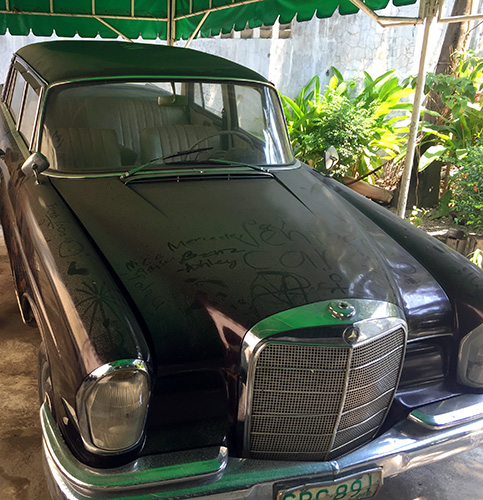An Underwhelming Museum in Cebu?
If you look at the web sites that give tourist advice for visitors to Cebu, you will without doubt see mention of the Archdiocesan Museum, which is housed in the former rectory of Cebu Metropolitan Cathedral. It was opened at the end of 2006 and, hardly surprisingly, its focus is on regional Church architecture and artefacts, with many of the items dating from Spanish colonial times.
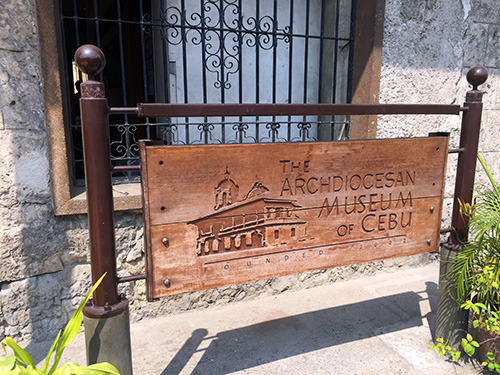
For many, though, the main attraction is the building itself. The structure is an example of ‘bahay-na-bato’ – a stone and wood construction with bamboo and sawali on the walls, hardwood trunks for the posts and Capiz shells for the wide windows.
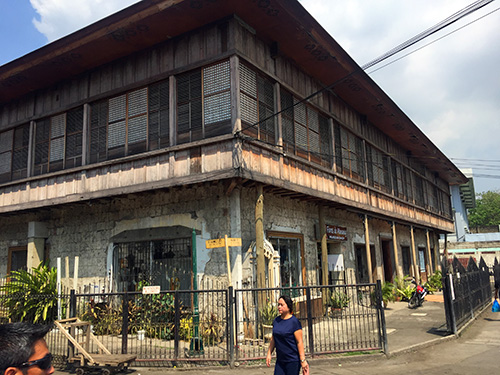
Situated across the road from Cebu’s Metropolitan Cathedral, the building which goes back to the 19th century was one of the few extant structures in downtown Cebu City that was totally spared from the ravages of World War II. Although no factual information regarding its construction can be found, received wisdom indicates it was probably built by Bishop Santos Gomez Marañon. (Marañon was a known church builder, who is credited with designing the Metropolitan Cathedral and various other religious structures in Cebu.) However, no records are currently available as the archdiocesan archives burned along with the Cathedral and the original Archbishop’s Palace during the trial bombing runs of the U.S. forces in September 1944.
This building was not only the first parish convent of the Cathedral, but also a school of the University of San Carlos, a cooperative store, and even a temporary chapel used during the renovation of the Cathedral. In the entrance hall, there’s a nicely carved seat…
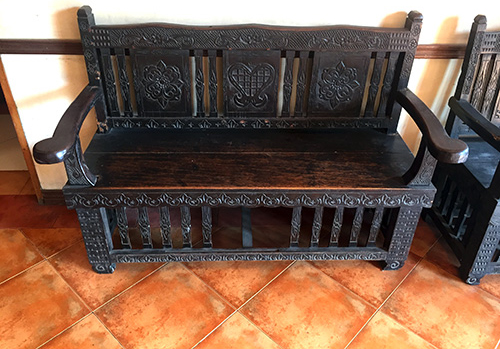
… as well as a hole – or to be more precise, an excavated unit exposing the different floors of the old "zaguan" or ground floor of the Cathedral Convent. The lowest floor made of earth dates to the pre-construction period. The upper layers expose the different types of flooring that reflect the different time periods: Spanish (coral stone blocks); American (concrete); and Post-war (concrete with red dye or muralo and concrete with polished aggregates).
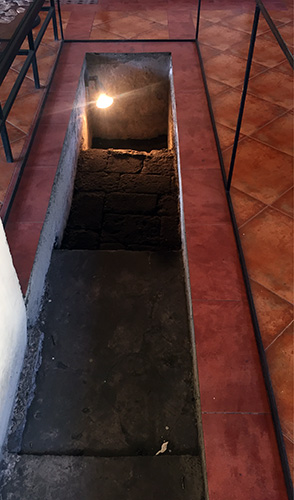
Near the hollowed out floor, there’s also a display of artefacts encased in glass. In August 2007, workers excavated a hole for a small septic tank abutting the northeast corner of the southern wing of the Cathedral Convent. At a depth of around 70 cm they uncovered a Spanish-period midden (trash pit) which is likely to have been the convent's outhouse (known locally as an Antipolo type toilet). It was common practice in those days to use these open pit toilets as trash pits for broken pieces of glass, ceramics and even metals that made up part of common household wares at the time. Fragments of cow and pig bones were also recovered in the same pit.
On display are blue and white Chinese trade-ware ceramic shards, most probably from around the mid-1700s to late 1800s. There are also fragments of wine bottles dating to the late Spanish period around the 1850s, as well as some American colonial period ceramics mostly of European origin.
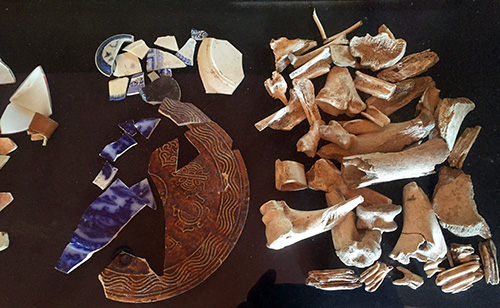
But from here on, photography is not allowed In the museum, which is a shame.
For our ₱50 entrance fee, we are first led into a chapel, which has become an exhibition area for "the Carmen collection" (that is, it comes from the parish of Carmen which is a town located in the northern part of Cebu province) that consists of a tabernacle and altar panels made of wood encased in etched silver. There are readings written in Latin, and numerous other altar embellishments.
On the upper floors are several small galleries that all seem to merge into one. For instance, there’s a gallery of photographs and illustrations depicting the growth of the Catholic faith in the island; another which shows how churches were constructed in the Spanish era; a gallery which is a collection of Saints, including one of St. Joseph on his deathbed. Another has a display of chalices, priestly vestments and other sacraments of the Roman Catholic Church. And a sample bedroom of a priest.
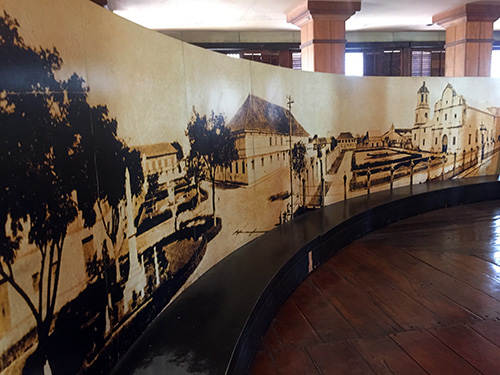
Yet another gallery features the memorabilia of Cardinal Ricardo Vidal, who was born in Mogpog, Marinduque, became a deacon in September 1955, a priest in March 1956, and a bishop in November 1971.
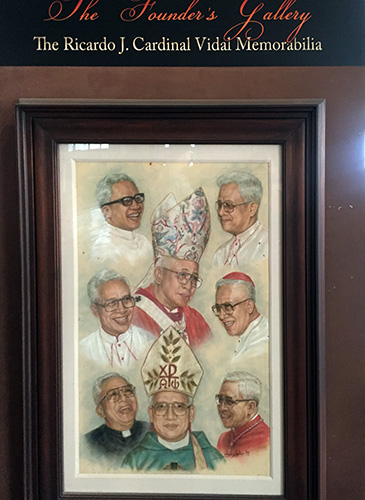
When first assigned to Cebu, Vidal was a resident of this convent as the parish priest of the cathedral. Among his memorabilia are prayer books, notebooks and a sample ballot used in the election of a pope, as well as a cardinal’s ring given to him by his predecessor, Cardinal Julio Rosales, and the vestments he used during his Episcopal ordination – that is, his elevation to the position of cardinal.
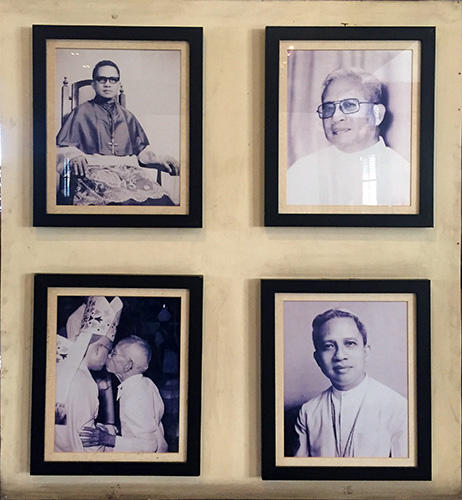
Unless you are heavily into Roman Catholic relics, you might well find this collection somewhat underwhelming. But as I said before, the building is the real treasure of this museum.
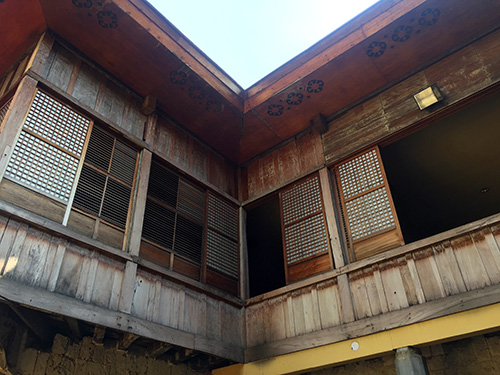
And at the back of the structure, a newish garden has been created and is now used as a venue for religious events. It also serves as a venue for garden weddings along with garden wedding receptions.
I particularly like the collection of old bells which have been hung up in the garden, though I think it’s a shame that this is to be the final resting place of the bells, which were surely created to ring out, rather than be hung silent.
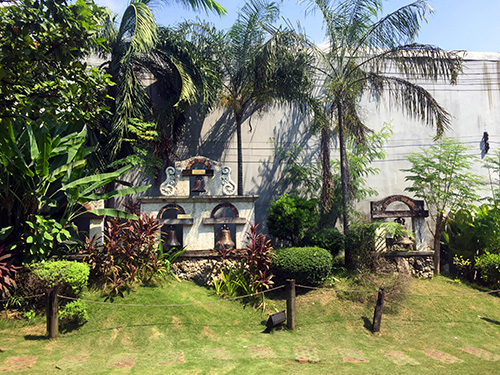
At the back of the garden, there is also a Mercedes used during the parade of the late Pope John Paul II in 1995, during World Youth Day. However, there is nothing to indicate the history of this ‘Popemobile’ and one thing it is desperately crying out for is a good scrub with some soap and water. Graffiti that itself was already covered with dust is all over the bonnet of the car. A sorry sight indeed.
